This summer has been an odyssey for the Conservancy.
In August, with the able pro bono assistance of Amy and Dany at Adler and Colvin, we submitted our application for 501(c)3 status, a lengthy petition that includes an organizational narrative, and a 17 page form. While we await our response, we are grateful to operate under the fiscal sponsorship of the Oakland Parks and Recreation Foundation.
We’re exploring grant opportunities worth tens of millions of dollars with the EPA in conjunction with relevant technical assistance organizations like EnDyna and the Environmental Protection Network. We’ve had conversations with folks at the National Parks Service about whether we can or should mount a campaign to designate Lake Merritt as a National Park (Jury’s out on both counts in case you’re wondering). We’re finding new visionaries in the community that are beginning to apply their deep knowledge and experience in community building, service design and landscape architecture so we can begin to refine and realize our goals.
And in no particular order, we’ve met with a great variety of Oaklanders, including two former mayors, several individuals from the City Administrator’s office, representatives from local institutions of higher learning, non-profit and business leaders, investors and donors, and most recently, an unhoused community organizer, who I’ll talk more about in a bit.
And out of these conversations, and the more organized gatherings we’ve hosted over the past year, we have been distilling our understanding of the challenges and opportunities around standing up a Conservancy.
Namely:
What to work on, and how to meaningfully engage the community
What programs look like, how much they cost, and how to fund them
How to activate the collective impulse for Conservancy volunteerism
And finally, how to create a sustainable organization that doesn’t rely on any one person to be successful, but benefits from the contributions of anyone who stands up and says - I want to be a part of this and I have something to offer!
In the spring we aimed to create out of our learnings, something that, for lack of a better term, we referred to as “The Vision of the Possible”. What I learned in the time since, is that a more actionable document was needed first - A Three Year Strategic Plan.
We have a draft at this point that describes not only where we’ve been, but what we are capable of doing in the next three years, provided there’s sufficient interest and will from the community. I look forward to sharing that document with you in the fall.
In the main, the Strategic Plan includes:
A statement of our goals
An inventory of our programs, and
Budget and timelines
You’ll find a summary of the first two items towards the end of this post.
If you’d like to help us refine and begin to realize all of this, drop us a note!
If you’d like to donate, donate here!
Which brings me to my next topic - Decoryan Warner.
Decoryan Warner
There are about a half a million people experiencing homelessness in the United States. About a third of those live in California. In Oakland, the 2024 Point-In-Time Count found that about 3600 residents, a bit more than the population of Yountville, are unhoused. That’s a 9% increase over 2022. Stanford’s Institute for Economic Policy Research did an expert unpack of the root causes and possible solutions for homelessness in California, and most all of it is applicable to Oakland specifically.
I remember when I first saw Mr. Warner’s temporary dwelling, a makeshift bus shelter on casters, adrift on the park lawn opposite the nearly-newly-renovated Henry J. Kaiser Convention Center a couple of months prior. I was shocked by the sheer audacity of it, and the symbolic milestone it represented of the homeless situation on the Lake.
Then, Bob introduced me to the man that built it.
Decoryan Warner is an individual who defies easy description.
His enigmatic smile reminds me a bit of Chadwick Boseman.
Intelligent, thoughtful, kind, observant… deep.
A carpenter’s apprentice, with a union card to prove it.
Journeyman skills learned from a long line of carpenters, and an ambition to transcend his roots entirely and find a path to stewardship for the community.
Evicted over a dispute involving the habitability of the house he was renting.
He decided to contest his eviction. His court date was set for the following month. In the meantime, he needed somewhere to stay.
So he got to work. He built a mobile home out of shipping palettes on casters, 2 x 4s for the frame, recycled plexiglass walls and scraps of roofing to keep the rain out. He put his remaining belongings inside it and fashioned a hitch so he could tow it behind his bicycle.
Then he conveyed his new home (he refers to it as a “temporary dwelling”) from its birthplace in a parking lot near the Oakland Zoo, some eight miles, or about a hundred long blocks, to where I found him on the south shore of the Lake, directly across from the courthouse, in what some might describe as a homestead.
Over a couple of Zoom calls and a couple of visits to his dwelling, Decoryan relayed his life story, including…
Growing up in Houston after being separated from his brother at age one…
Moving to Oakland to live with his uncle and developing himself as an artist and theater person at Oakland Tech…
Working his way up in the carpentry industry on projects like the Uptown Condominiums and the Fox Court Apartments, behind the Fox Theater, in his 20s....
A wrong-time-wrong-place run in with a K-9 police unit in Hayward that left him traumatized for a long time afterwards…
Moving to Oakland to start his own non-profit, “Community Rich”, in the aftermath of the George Floyd murder…
“I was pro-justice for everyone, right? But I was more focused on this happening because something very similar had happened to me and I could have lost my life. There was like guns pointed to my head, a dog on my arm…
… Decoryan has applied for over 20 City of Oakland jobs since 2020, including “Clean Community Supervisor” as of November 2023… He has applied for housing since Aug 2023 and currently isn’t prioritize for housing in the City of Oakland proximity requirements for housing.* [He] is currently building safer temporary housing for the local homeless, city and residents [sic] as a 1st step to identifying housing and improving our collective safety and shared environment. He plans to find permanent housing without being forced into a tiny shed, drug induced community, out of the city or away from local resources.
The City’s hiring policy is designed very specifically with inclusion and equity in mind. However, the hiring mechanism itself at the front end, as with so many other large organizations, is essentially a big robot, full of easy ways to get lost. People who could be part of the solution slip through the cracks, and against their own wishes, become part of the problem.
A Walk in the Park
Decoryan took us on a tour of the encampment under the 12th Street Bridge, where he seems to know most of the inhabitants. I brought a vintage digital SLR to capture the scene, which drew an angry glare from across the canal. I’m reminded of a story I heard recently about a photographer being robbed at gunpoint on the pedestrian bridge only a few hundred feet from where we are. Decoryan says, “you’ll be safe with me”… waves off the glaring guy, clears a space...
He asks a gentleman living in a tent in the middle of the underpass if he’d like to tell his story. “No I’m good” he says and slips back inside his domicile.
Freddy is a bit more talkative, volunteering as to how his SSI benefits ran out, and the company he’s working on to shine up headlights. He’s just gotta work some stuff out.
Beyond the bridge, the splendor of Peralta Park unfolds like a scene out of a post-apocalyptic dream-gone-terribly-wrong.
How did we ever come to this?
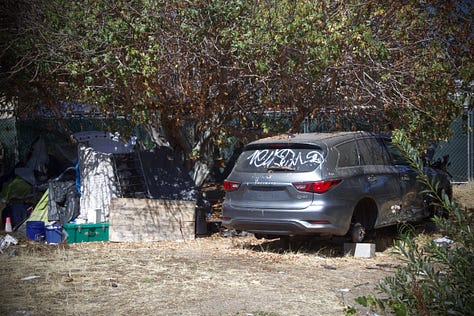
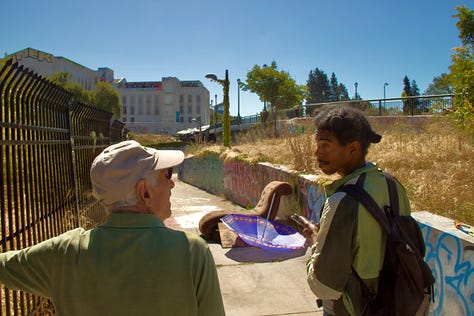

Later, a City official reminds me that the City will be closing that encampment this fall.
On the one hand I’m relieved.
On the other hand, the underlying conditions aren’t going away. People need a way to make a living and a roof over their head at the end of the day. There are still numerous encampments all across the Lake, most notably on Bellevue, but to a lesser extent in every nook and knoll around the park.
We need to do better by Freddy.
We need to do better by Decoryan.
We need to do better by everyday residents and visitors who come to Lake Merritt as a place to reconnect with nature and with their friends.
And no one has all the answers, but guess what.
We can.
About the Lake Merritt Conservancy
We have to stop accepting as inviolable the web of self-imposed and impenetrable constraints that have hamstrung our ability to solve our most important problems.
We have to find ways of celebrating what we have in common instead of fighting each other for what we don’t.
Either we’re part of the solution, or we’re all part of the problem.
Our Goals
In The Service of an Ideal Park Experience for all Creatures Great and Small:
(Re)Connect Lake Merritt to the greater Oakland Community, as well as to improve the quality and resilience of the connections within it, to unlock the human potential for realizing the Conservancy Mission.
Revitalize the built environment and associated programming to meet the needs of a 21st century urban park experience, and to provide for positive, environmentally-and-socially-conscious community building.
Develop entrepreneurial and volunteer programs to bring ambassadors to the Lake, rehome the unhoused, and that help the City of Oakland meet its climate goals under its Equitable Climate Action Plan.
Proposed Programs
The Conservancy Connection
Digital/Physical network to unlock community potential, bridge the gaps to facilitate input and enable all of the other programs
Spread the Word
Create long term cultural change through public awareness campaigns that emphasize the value of environmental stewardship
SmartBins
High capacity, positive-closing litter containers with access points for the Conservancy Connection and signage from our sponsors..
Home Run
A program In partnership with relevant NGOs and City programs to provide employment for the unhoused on the Lake and beyond.
Ambassadors
Combines the benefits enjoyed by local BIDs w/park sensibilities - creates jobs, collective mouthpiece for Spreading the Word
Rethinking the Built Environment
Rethinking the built environment for the 21st century; restore and preserve green space while rebuilding to support responsible park use
Green Machines
A Green Impact Studio to spawn startups that help meet Oakland’s jobs & climate goals under its 2030 Equitable Climate Action Plan
* Charlene Wang, candidate for City Councilmember-at-Large, had an interesting take on what Decoryan experienced: “Our core problem is that when homeless service providers take federal funds, they are bound by rules called Coordinated Entry. This process places people on waiting lists and prioritizes people with the highest “vulnerability scores”, this functionally withholds help and housing until people have been on the street for years instead of helping them quickly. By the time help comes around, people often develop PTSD, addiction, and other problems from living on the street.”
Freddy probably fits the mold of someone who scores high enough to get priority assistance. More research required…




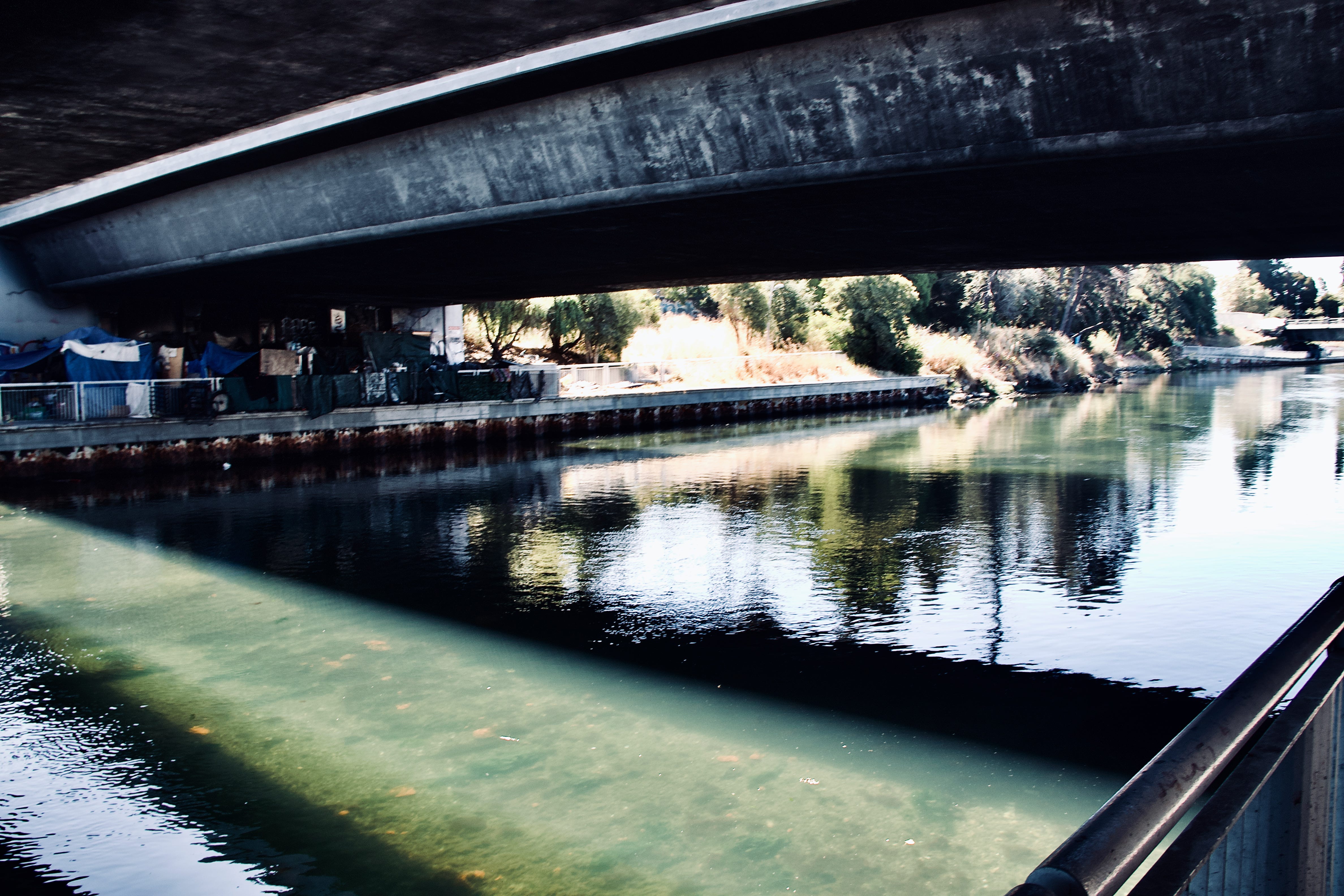


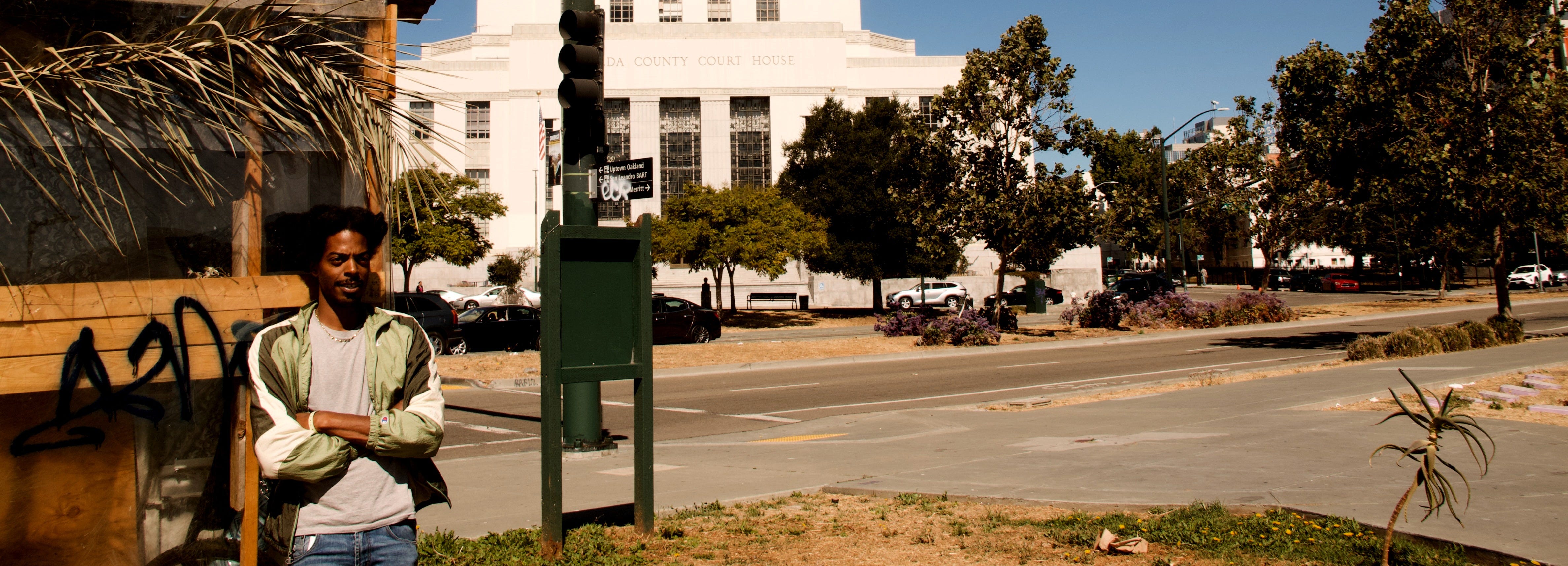
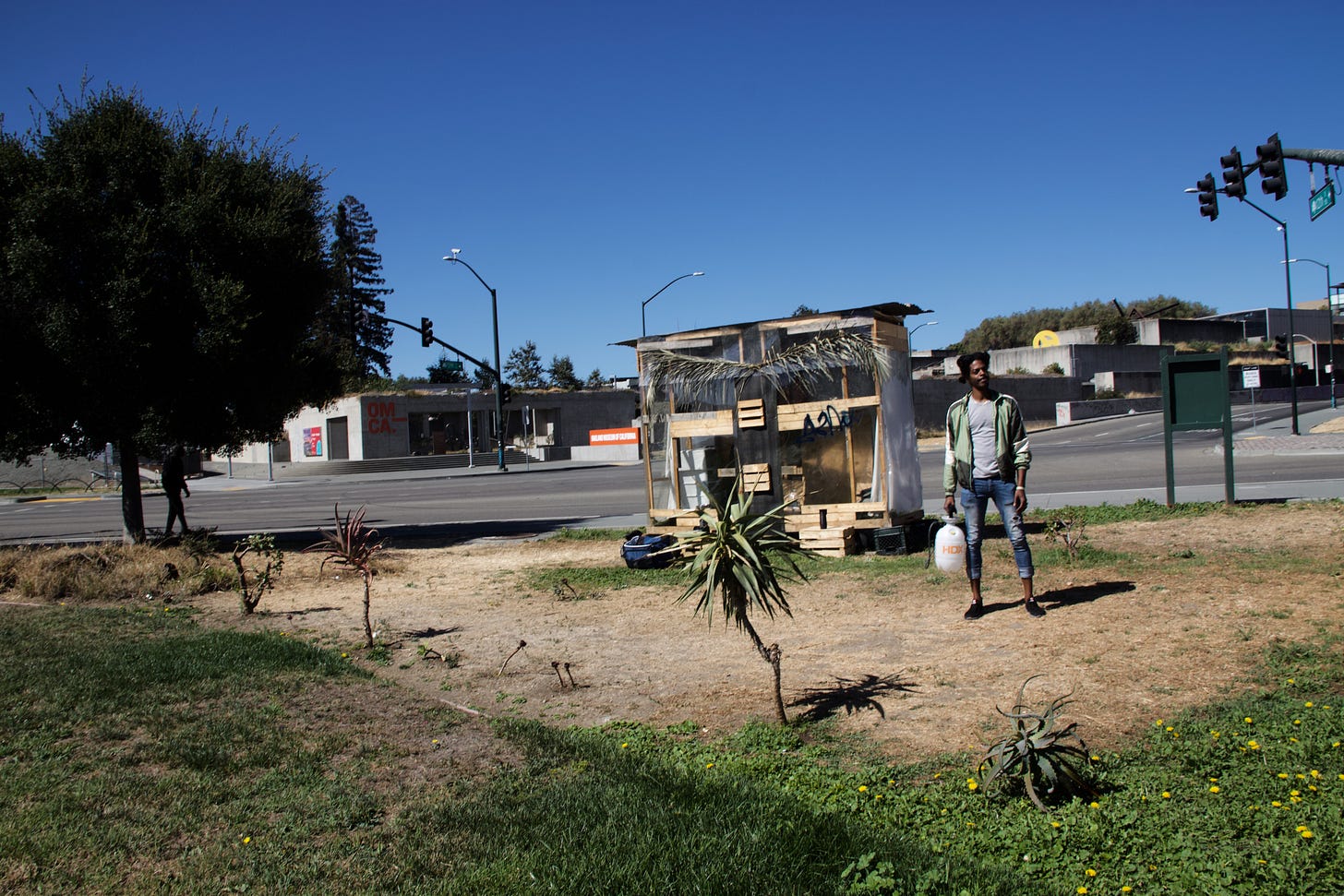

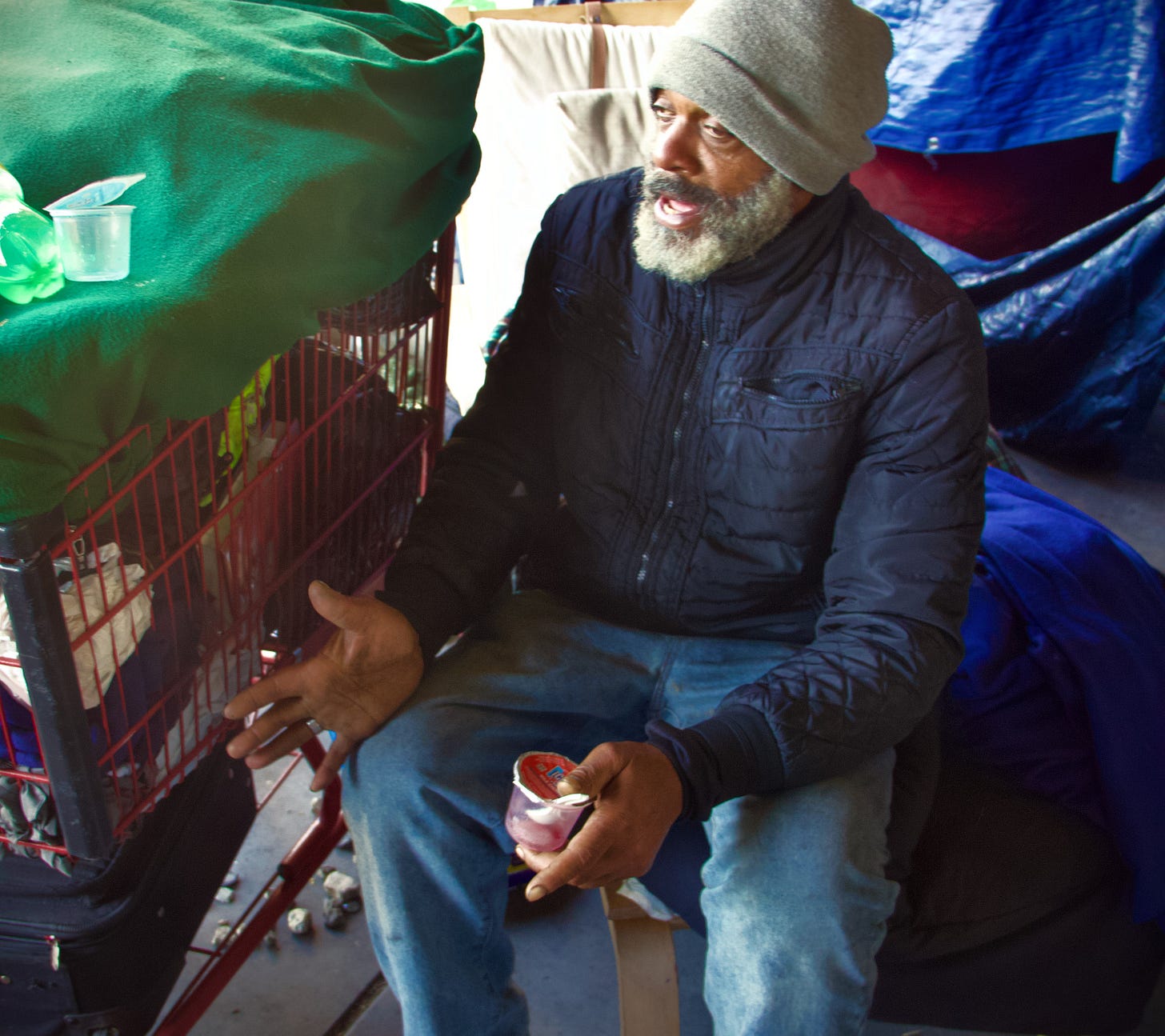
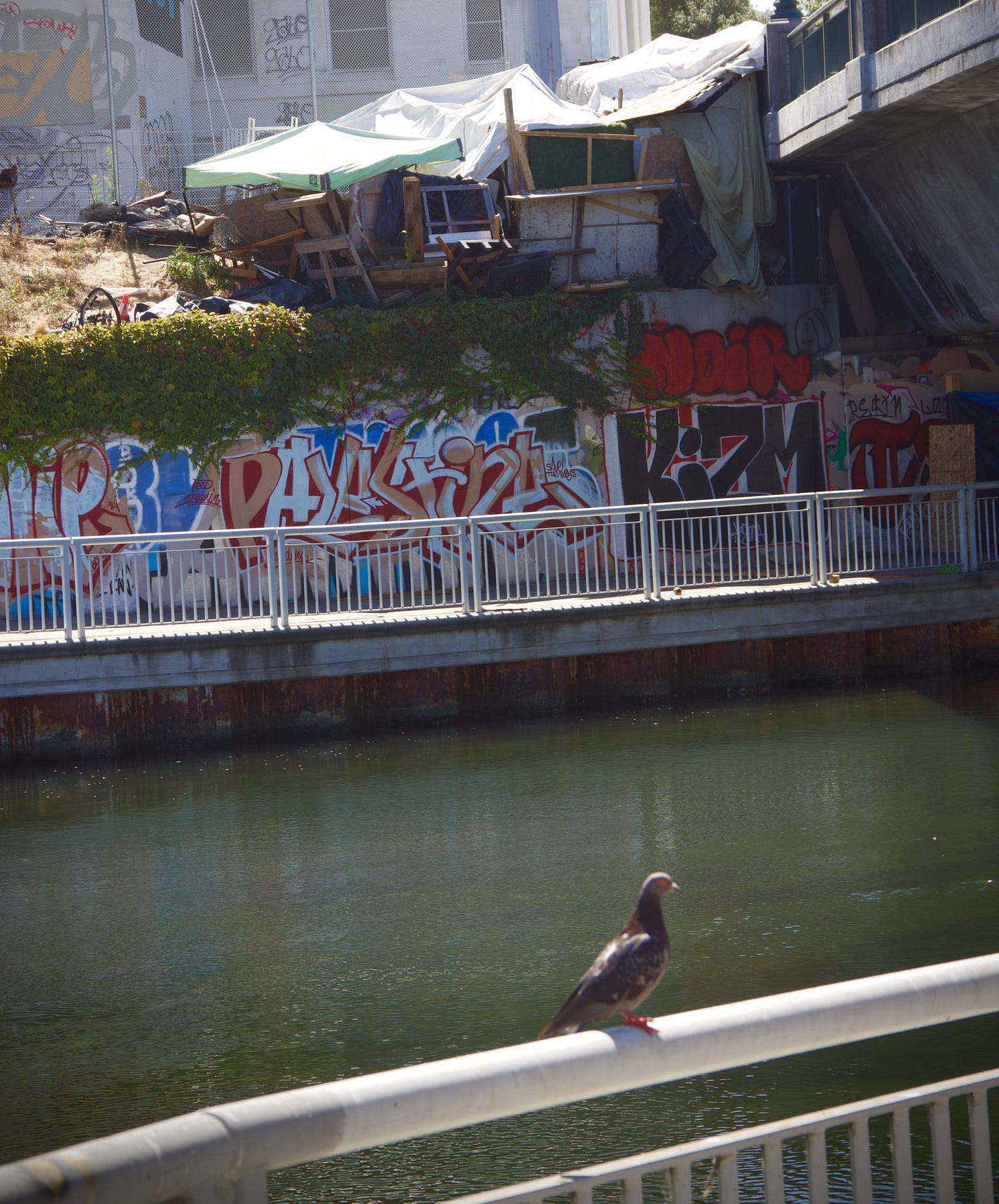
Thanks for your report. Decoryan's story and the visit under the bridge is really eye opening. We shouldn't let people who happen to run out of resources for the time being to just end up on the streets. Thanks for enlisting us to be part of the solution.